Get our email updates
Stay up-to-date on the companies, people and issues that impact businesses in Syracuse, Central New York and beyond.
What's New
Upcoming Events
CNYBJ Job Board

INSPYRE Innovation Hub is now open for entrepreneurs, the public to see
SYRACUSE, N.Y. — The first in a series of monthly open-house events at the INSPYRE Innovation Hub (the expanded former Tech Garden) is set for Oct. 30 at 11 a.m. The 90-minute event allows those interested to “explore our startup services and programs and learn how we support entrepreneurs in Central [New York!],” per the […]
Get Instant Access to This Article
Become a Central New York Business Journal subscriber and get immediate access to all of our subscriber-only content and much more.
- Critical Central New York business news and analysis updated daily.
- Immediate access to all subscriber-only content on our website.
- Get a year’s worth of the Print Edition of The Central New York Business Journal.
- Special Feature Publications such as the Book of Lists and Revitalize Greater Binghamton, Mohawk Valley, and Syracuse Magazines
Click here to purchase a paywall bypass link for this article.
SYRACUSE, N.Y. — The first in a series of monthly open-house events at the INSPYRE Innovation Hub (the expanded former Tech Garden) is set for Oct. 30 at 11 a.m.
The 90-minute event allows those interested to “explore our startup services and programs and learn how we support entrepreneurs in Central [New York!],” per the events page on the facility’s website. Those interested are asked to register at https://inspyrehub.com/events/
CenterState CEO on Sept. 18 formally opened the expanded INSPYRE Innovation Hub at 235 Harrison St. in Syracuse.
The ribbon cutting followed a two-year, $32 million expansion project. Empire State Development provided up to $16.6 million for the initiative through the region’s CNY Rising Upstate Revitalization Initiative.
The project included a two-story addition to the existing building, renovations to the facility’s existing space, updates to the on-site mechanical and security systems, a new 5,000-square-foot roof terrace accessible to clients, 3,000-square-foot meeting room, private tenant offices for 35 additional resident startups, coworking areas, an expanded hardware space for prototype and product development and a new entrance.
Hueber-Breuer Construction Co., Inc. served as the contractor on the project. Besides Hueber-Breuer, Eli Smith of E. Smith Contractors of Syracuse also contributed, and QPK Design of Syracuse handled the design work.
The expanded facility serves to anchor Syracuse’s City Center Innovation Hub, a core component of the Syracuse Surge economic-development strategy and will serve as the gateway to the “Innovation Alley” on Warren Street in Syracuse, the office of Gov. Kathy Hochul said in its Sept. 18 announcement.
The multi-story facility is the largest business incubator in New York State, Hochul’s office added.
INSPYRE will continue to be the central hub for the Genius NY program, described as the world’s largest business accelerator for the uncrewed systems and robotics industry. Since 2017, Genius NY has invested nearly $24 million in 42 companies from around the world and the companies who have taken part have raised more than $350 million in follow-on funding and created hundreds of new jobs in New York state.

ERIC REINHARDT / CNYBJ
“The building for us and the building for me encapsulates where Syracuse is right now as a community, right?” Ben Sio, acting president of CenterState CEO, said in his remarks to open the event Thursday morning. “We’re on the cusp of something big [not only] as an organization but as a community… This is a 90,000-square-foot facility now. It’s the largest accelerator and incubator in New York State.”
Sio went on to say, “I think what’s more important about this facility is what got us here today. We’ve been working on tech startups and supporting a small-business ecosystem before CenterState was a thing. For over 20 years, our organizations have focused on investing in the smallest of small businesses and helping make sure that they’re successful, and we’ve been really successful in doing that.”
Sio also acknowledged the attendance of former U.S. Representative Jim Walsh, who is also the father of current Syracuse Mayor Ben Walsh. Just over two decades ago, as chair of the House Appropriations Committee, Jim Walsh secured some of the initial funding to renovate the original facility from a collapsed parking garage into what was the Tech Garden.
“Your vision helped us get here today. Thank you,” Sio said to Walsh, a comment that was greeted with applause.
Besides Sio, those speaking at the event included New York State Senator Rachel May (D–Syracuse); New York State Assemblyman Al Stirpe (D–Cicero); New York State Senator Chris Ryan (D–Geddes); Syracuse Mayor Ben Walsh; Onondaga County Executive Ryan McMahon; Katie Newcombe, director of economic development for New York at National Grid; John Liddy, VP of innovation and entrepreneurship at CenterState CEO; and Steve Gorczynski, Central New York regional president for Buffalo–based M&T Bank (NYSE: MTB), which on Sept. 9 said it signed a seven-year deal with CenterState CEO to serve as the founding sponsor of the INSPYRE Innovation Hub.
In his remarks, Stirpe recalled Robert Simpson, president and CEO of CenterState CEO, telling him about the expansion idea in 2017 and seeing the facility’s design about a year later. A few years later, Simpson notified Stirpe that the renovation would cost about $32 million, up from the initial figure of $24 million. Stirpe then noted that it took some work, but Syracuse–area state lawmakers were able to secure the funding.
Stirpe went on to say he’s a big believer in the “pursuit of wow!”
“Why have something that’s just like everybody else’s? You want to have something that … you don’t even need a sign on the front,” Stirpe said. “When people drive around, they say, where’s the Innovation Hub? All they have to do is look up, and they’ll know that’s this building, and that’s what I’m most proud of.”

MVHS COO LeCates to assume CEO role later this month
UTICA, N.Y. — Dr. William LeCates, who has been serving as COO of the Mohawk Valley Health System (MVHS) for the past 14 months, will become the system’s top executive on Oct. 20. The MVHS board of directors on Sept. 18 announced the appointment of LeCates, who will succeed Darlene Stromstad, who is retiring after
Get Instant Access to This Article
Become a Central New York Business Journal subscriber and get immediate access to all of our subscriber-only content and much more.
- Critical Central New York business news and analysis updated daily.
- Immediate access to all subscriber-only content on our website.
- Get a year’s worth of the Print Edition of The Central New York Business Journal.
- Special Feature Publications such as the Book of Lists and Revitalize Greater Binghamton, Mohawk Valley, and Syracuse Magazines
Click here to purchase a paywall bypass link for this article.
UTICA, N.Y. — Dr. William LeCates, who has been serving as COO of the Mohawk Valley Health System (MVHS) for the past 14 months, will become the system’s top executive on Oct. 20.
The MVHS board of directors on Sept. 18 announced the appointment of LeCates, who will succeed Darlene Stromstad, who is retiring after nearly seven years in her role leading MVHS.
Following Stromstad’s announced retirement, MVHS says its board of directors conducted a national search for a president and CEO and, after extensive interviews with other highly qualified candidates, selected LeCates as Stromstad’s successor.
As COO, LeCates has been responsible for clinical-support services, operational-support services, supervising MVHS product lines, and working with quality and medical education.
Dr. LeCates has also maintained a limited clinical practice in internal medicine and nephrology, MVHS noted.
“Dr. LeCates is a proven leader with a deep understanding of healthcare systems and an unwavering commitment to patient care,” Richard Zweifel, chair of the MVHS board of directors, said in the MVHS announcement. “His clinical expertise, operational experience and knowledge of the region make him uniquely suited to lead MVHS into its next chapter.”
Stromstad will continue to act as an advisor to MVHS through the end of this year.
“We are grateful to Darlene Stromstad for the key role she played in bringing the Wynn Hospital to fruition,” said Zweifel. “Her leadership and guidance helped to steer the organization both during the transition to a new facility as well as during a worldwide pandemic.”
LeCates background
LeCates began his career in health care more than 25 years ago. Prior to joining MVHS, LeCates served as an executive director for JPMorgan Chase where he provided clinical oversight of the health-care operations of 22 U.S. health centers serving more than 150,000 employees.
As a physician and health-care leader, the majority of LeCates’ career has been spent in various roles with Cooperstown–based Bassett Healthcare Network and its affiliates, including serving as president and COO of Bassett Medical Center.
“I’m honored that the Board of Directors has the confidence in me to lead MVHS into its next chapter,” LeCates said. “Working alongside the extraordinary caregivers at MVHS over the past year has been a tremendous privilege. Together, we have before us a wonderful opportunity to grow and evolve in bringing the very best quality healthcare to all the communities we serve. I am truly grateful to lead MVHS at this critically important time.”
LeCates earned his undergraduate degree from Amherst College and earned his medical degree from the Johns Hopkins University School of Medicine, MVHS said. He completed his internal-medicine residency and nephrology-fellowship training at the Johns Hopkins Hospital. LeCates is board certified in internal medicine and nephrology.
LeCates also brings many years of military-leadership experience to the CEO role. He currently serves as a colonel in the New York Army National Guard, with previous overseas tours in Afghanistan, Iraq, and Liberia. LeCates is a graduate of the United States Army War College in Carlisle, Pennsylvania.

SNCC to use another Spectrum $25K gift for workforce-development program
SYRACUSE, N.Y. — The Syracuse Northeast Community Center (SNCC) will use an additional $25,000 grant from Spectrum to further enhance its workforce-development program. The funding comes through the Spectrum Community Center Assist (SCCA) initiative. It’s part of Spectrum’s $30 million philanthropic initiative to revitalize local community centers and invest in job-training programs in rural and
Get Instant Access to This Article
Become a Central New York Business Journal subscriber and get immediate access to all of our subscriber-only content and much more.
- Critical Central New York business news and analysis updated daily.
- Immediate access to all subscriber-only content on our website.
- Get a year’s worth of the Print Edition of The Central New York Business Journal.
- Special Feature Publications such as the Book of Lists and Revitalize Greater Binghamton, Mohawk Valley, and Syracuse Magazines
Click here to purchase a paywall bypass link for this article.
SYRACUSE, N.Y. — The Syracuse Northeast Community Center (SNCC) will use an additional $25,000 grant from Spectrum to further enhance its workforce-development program.
The funding comes through the Spectrum Community Center Assist (SCCA) initiative.
It’s part of Spectrum’s $30 million philanthropic initiative to revitalize local community centers and invest in job-training programs in rural and urban underserved communities where the telecommunications and mass media company operates.
“We are only able to do the crucial work of connecting neighbors with opportunity through generous support such as Spectrum provides. Their devotion to workforce development and support of our community has been incredible,” Brian Fay, executive director of the Syracuse Northeast Community Center, said in the announcement.
Spectrum says it launched the partnership on Oct. 7, 2023, with employees and community volunteers making repairs and other physical improvements to the Syracuse Northeast Community Center.
As part of the initiative, Spectrum donated 25 new laptops for a new technology room and provided $50,000 to support the organization’s workforce-development program. Additionally, Spectrum offered its 1 Gig service at no charge for the life of the program and donated an additional set of 25 new laptops to further support the center’s training and technology programs.
The Syracuse Northeast Community Center serves more than 7,500 individuals annually. Through the partnership, the center has provided 1,386 people with job training, assisted 47 individuals in obtaining credentials, and enabled 239 people to secure meaningful employment and connect with other essential services. Since the partnership began, Spectrum has committed a total of $125,000 in grant funding and more than $50,000 in revitalization funding to support these initiatives.
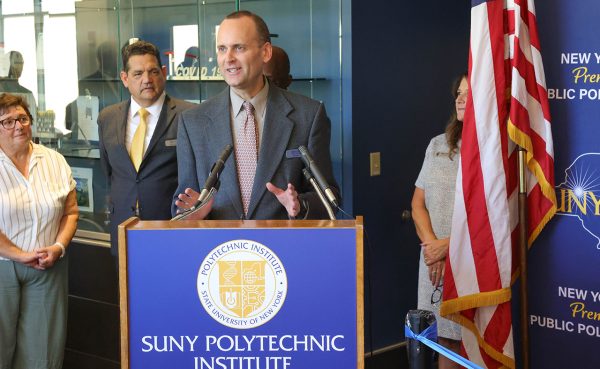
SUNY Poly appoints director of NYSTEC Business Center of Excellence in Marcy
MARCY, N.Y. — SUNY Polytechnic Institute (SUNY Poly) has appointed Jim Staihar, assistant professor of business ethics, as the inaugural executive director of its NYSTEC Business Center of Excellence. SUNY Poly formally opened the NYSTEC Business Center of Excellence during a ceremony held on Sept. 19. “I am deeply honored to be named Executive Director
Get Instant Access to This Article
Become a Central New York Business Journal subscriber and get immediate access to all of our subscriber-only content and much more.
- Critical Central New York business news and analysis updated daily.
- Immediate access to all subscriber-only content on our website.
- Get a year’s worth of the Print Edition of The Central New York Business Journal.
- Special Feature Publications such as the Book of Lists and Revitalize Greater Binghamton, Mohawk Valley, and Syracuse Magazines
Click here to purchase a paywall bypass link for this article.
MARCY, N.Y. — SUNY Polytechnic Institute (SUNY Poly) has appointed Jim Staihar, assistant professor of business ethics, as the inaugural executive director of its NYSTEC Business Center of Excellence.
SUNY Poly formally opened the NYSTEC Business Center of Excellence during a ceremony held on Sept. 19.
“I am deeply honored to be named Executive Director of the NYSTEC Business Center of Excellence,” Staihar said in the Sept. 25 announcement of his appointment. “This center represents a unique opportunity for our students to explore artificial intelligence, confront the ethical challenges of modern business, and pursue bold entrepreneurial ideas. I am excited to work alongside our faculty, staff, and community partners to create an environment where students can develop the skills, knowledge, and integrity needed to lead in today’s dynamic global economy.”
In addition to his new leadership role, Staihar serves as assistant professor of business ethics in SUNY Poly’s College of Business. He was previously the inaugural Fishlinger Family Endowed Scholar at the University of Maryland’s Center for the Study of Business Ethics, Regulation, and Crime and has held fellowships at Princeton University and the University of Chicago Law School.
About the Center
A $500,000 pledge from New York State Technology Enterprise Corporation (NYSTEC) sparked the initiative to support the creation of an interdisciplinary business center in SUNY Poly’s Donovan Hall. To acknowledge the donation, the new hub will bear the name NYSTEC Business Center of Excellence.
The NYSTEC Business Center of Excellence will serve as a vital hub for innovation, entrepreneurship, and interdisciplinary education, SUNY Poly said in its announcement.
It includes an AI & Business Lab, which exploring the “transformative” impact of artificial intelligence (AI) on business, along with a business-ethics initiative, which offers programs and events to address the “moral complexities” of modern business.
The center also includes an entrepreneurship and innovation hub that provides support for student startups, mentorship, and networking opportunities. It also has an AI trading room, which is described as an environment for students to engage with real-world financial-market simulations.
“We are deeply grateful to NYSTEC and our many donors for making this Center possible,” SUNY Poly President Winston Soboyejo said. “Their generosity is an investment in our students — the innovators, entrepreneurs, and leaders of tomorrow. The NYSTEC Business Center of Excellence is more than a building; it is a hub where students will explore artificial intelligence, engage with the ethical challenges of business, and bring bold ideas to life. Together, we are creating opportunities that will prepare SUNY Poly graduates to succeed in a rapidly changing global marketplace.”
The ribbon-cutting event brought together elected officials and leadership from Oneida County, the City of Utica, the New York State Legislature, and members of Congress, alongside campus leaders, faculty, staff, and students.
“We are proud to support the launch of the NYSTEC Business Center at SUNY Poly, which reflects our mission to strengthen communities and prepare the workforce of tomorrow,” NYSTEC CEO Kevin Owens said. “The center will be an important resource for the Mohawk Valley, driving economic development and creating new opportunities for students and businesses alike. Students will be exploring some of the most important and pressing technological and business issues of our time. This investment highlights our deep partnership with SUNY Poly and our shared commitment to the region’s growth.”

Utica to host the 2026 NYS Tourism Conference
UTICA, N.Y. — Utica will host the 2026 New York State Tourism Conference, presented by the New York State Tourism Industry Association (NYSTIA). The event is set for April 22-24, 2026 at Delta Hotels by Marriott Utica, located at 200 Genesee St. in downtown Utica. It will welcome more than 200 tourism professionals from across
Get Instant Access to This Article
Become a Central New York Business Journal subscriber and get immediate access to all of our subscriber-only content and much more.
- Critical Central New York business news and analysis updated daily.
- Immediate access to all subscriber-only content on our website.
- Get a year’s worth of the Print Edition of The Central New York Business Journal.
- Special Feature Publications such as the Book of Lists and Revitalize Greater Binghamton, Mohawk Valley, and Syracuse Magazines
Click here to purchase a paywall bypass link for this article.
UTICA, N.Y. — Utica will host the 2026 New York State Tourism Conference, presented by the New York State Tourism Industry Association (NYSTIA).
The event is set for April 22-24, 2026 at Delta Hotels by Marriott Utica, located at 200 Genesee St. in downtown Utica. It will welcome more than 200 tourism professionals from across New York state to the Mohawk Valley, Oneida County Tourism (OCT) announced.
OCT says Utica’s growing hospitality infrastructure, central location in the state, and recent investments all played a role in the selection, per the Sept. 18 announcement.
“From Turning Stone Resort Casino’s Evolution expansion in Verona to the Utica University Nexus Center, a thriving food and beverage scene, and rising recognition of the area’s arts and heritage, the city continues to be an increasingly attractive hub for events of all kinds,” OCT contends in its announcement.
Madison Cermak, director of operations at Oneida County Tourism, is leading the effort to bring the conference to Utica, alongside OCT President Sarah Foster Calero and the NYSTIA executive team.
The event is expected to generate more than 250 hotel room nights and an estimated $75,000 in direct spending at local restaurants, coffee shops, and businesses.
“Hosting the 2026 New York State Tourism Conference is an incredible honor for Oneida County Tourism and for our community,” Calero, who is also a board member of NYSTIA, said in the announcement. “I’ve attended this conference in other parts of New York, and now it’s our turn. For me, this is about more than welcoming colleagues from across the state — it’s our chance to give attendees a taste of what makes us special, and I’m not just talking about chicken riggies and halfmoons. We’re excited to create a conference experience that delivers tremendous value while giving everyone a true sense of place here in CNY.”
“We’re so excited to welcome the New York State Tourism industry to the Delta Marriott Utica,” Lee Arthur, general manager at Delta Hotels by Marriott Utica, said. “We are looking forward to showcasing not only our hotel, but also Oneida County and all the exciting things happening around the city.”
Conference programming will include keynote presentations, breakout sessions, and networking opportunities, along with off-site learning classrooms and immersion tours at attractions across the county.
“Oneida County is proud to host the NYSTIA Conference and to showcase all that our region has to offer,” Oneida County Executive Anthony Picente, Jr. said. “From our rich history and cultural attractions to our natural beauty and growing hospitality industry, this gathering provides an incredible opportunity to highlight why Oneida County is such a unique and welcoming destination for visitors from across New York State and beyond.”
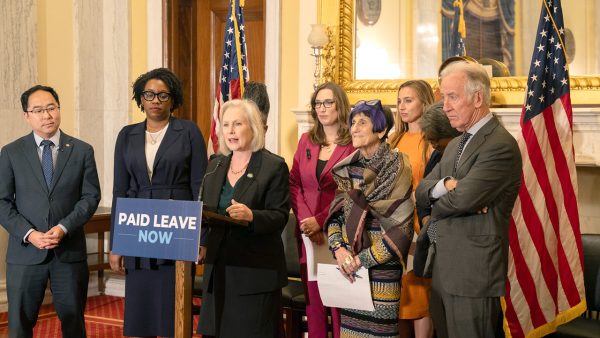
Gillibrand again pushes FAMILY Act for universal paid leave
The proposed Family and Medical Insurance Leave (FAMILY) Act, sponsored by Senator Kirsten Gillibrand (D–N.Y.) and other Democrats in Congress, would guarantee up to 12 weeks of partial income for workers who need to take leave for serious medical and family events. Paid medical and family leave is “especially helpful” for new parents and older
Get Instant Access to This Article
Become a Central New York Business Journal subscriber and get immediate access to all of our subscriber-only content and much more.
- Critical Central New York business news and analysis updated daily.
- Immediate access to all subscriber-only content on our website.
- Get a year’s worth of the Print Edition of The Central New York Business Journal.
- Special Feature Publications such as the Book of Lists and Revitalize Greater Binghamton, Mohawk Valley, and Syracuse Magazines
Click here to purchase a paywall bypass link for this article.
The proposed Family and Medical Insurance Leave (FAMILY) Act, sponsored by Senator Kirsten Gillibrand (D–N.Y.) and other Democrats in Congress, would guarantee up to 12 weeks of partial income for workers who need to take leave for serious medical and family events.
Paid medical and family leave is “especially helpful” for new parents and older Americans, who are more likely to have health issues or caregiving obligations for older relatives, per Gillibrand.
Both Gillibrand and U.S. Representative Rosa DeLauro (D–Conn.) on Sept. 16 held a press conference to announce the introduction of the proposed FAMILY Act.
“Without universal paid leave, millions of Americans are forced to make devastating choices between their livelihood and the health of themselves or their families,” Gillibrand said in the announcement. “By guaranteeing up to 12 weeks of paid leave for workers who have to take time off for a major life event, the FAMILY Act will end these impossible decisions. I am proud to have led the fight for paid leave alongside Representative DeLauro for over a decade, and I’ll continue fighting for this program for as long as it takes so we can give every worker the flexibility and dignity they deserve.”
Gillibrand also introduced the FAMILY Act in the Senate in May 2023 and February 2021, when Democrats controlled the Senate, and the legislation did not advance past committee, according to the website of Congress.gov. Republicans currently have the majority in the Senate. The legislation was first introduced as a bill sponsored by DeLauro in the House back in December 2013, per the website.
Gillibrand and DeLauro today argue the FAMILY Act delivers a “key solution to the country’s public health and economic challenges and is modeled on successful state programs,” Gillibrand’s office said. Currently, 73 percent of American workers do not have access to paid leave despite a large body of research showing that paid leave improves workers’ mental health; boosts employee retention and productivity; and helps businesses. Additionally, working families lose $22.5 billion per year in wages due to a lack of paid family and medical leave.
The proposed FAMILY Act would provide workers with paid leave for a range of major life events. They include recovering from their own serious health condition; caring for a family member with a serious health condition; and bonding with a new child — whether newborn, adopted, or placed through foster care.
The life events could also include handling responsibilities related to a family member’s military deployment; and taking “safe leave” to respond to domestic violence, sexual assault, or stalking.
Gillibrand and DeLauro were joined at the press conference by Senators Ron Wyden (D–Ore.) and Andy Kim (D–N.J.), as well as Reps. Richie Neal (D–Mass.), Lauren Underwood (D–Ill.), and Sarah McBride (D–Del.). The proposed legislation is also cosponsored by a number of other Democrat senators.
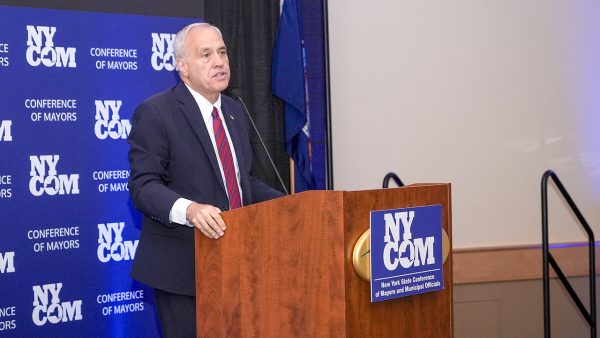
Former Durhamville Fire Dept. treasurer admits to $92K theft
DURHAMVILLE, N.Y. — Sentencing is set for Nov. 21 for the former treasurer of the Durhamville Fire Department in Oneida County, who recently pled guilty to stealing more than $92,000 from the fire department over a seven-year period. As part of the plea, Kimberly Simchik, 62, of Durhamville will pay restitution of just over $92,000
Get Instant Access to This Article
Become a Central New York Business Journal subscriber and get immediate access to all of our subscriber-only content and much more.
- Critical Central New York business news and analysis updated daily.
- Immediate access to all subscriber-only content on our website.
- Get a year’s worth of the Print Edition of The Central New York Business Journal.
- Special Feature Publications such as the Book of Lists and Revitalize Greater Binghamton, Mohawk Valley, and Syracuse Magazines
Click here to purchase a paywall bypass link for this article.
DURHAMVILLE, N.Y. — Sentencing is set for Nov. 21 for the former treasurer of the Durhamville Fire Department in Oneida County, who recently pled guilty to stealing more than $92,000 from the fire department over a seven-year period.
As part of the plea, Kimberly Simchik, 62, of Durhamville will pay restitution of just over $92,000 and faces one to three years in jail at sentencing.
Simchik pled guilty to grand larceny in the second degree and corrupting the government in the second degree before Judge Michael Nolan in Oneida County Court.
New York State Comptroller Thomas DiNapoli, Oneida County District Attorney Todd Carville, and New York State Police Superintendent Steven James announced Simchik’s guilty plea on Sept. 24.
“Kimberly Simchik diverted fire department resources to bankroll her personal life, betraying the trust of the community she served,” DiNapoli said in the announcement. “My thanks to Oneida County District Attorney Carville and the New York State Police for their partnership in holding her accountable.”
DiNapoli’s office explained that Simchik stole over $90,000 in fire department funds by using the department’s debit card to make payments at local casinos and by diverting checks made out to the department into her personal account. She also spent department funds on plane tickets, spas, and nail salons.
The theft was discovered when a fire department member attempted to make a deposit and was informed by the bank that the department account had been closed due to a negative balance. The fire department subsequently reached out to the New York State Police, who partnered with DiNapoli’s office to conduct an investigation and forensic analysis. Simchik has since resigned from the fire department.
“The Oneida County District Attorney’s Office would like to thank the New York State Police and the New York State Comptroller’s Office for their assistance in bringing the defendant to justice,” Carville said in the DiNapoli announcement. “This reprehensible act has no place in our society. Stealing from our volunteer service, the great men and women who dedicate their time and talent to the Durhamville Fire Department, is wholly unacceptable and inexcusable. I would like to thank my Assistant, Assistant District Attorney Kurt Schultz, for holding Ms. Simchik accountable for her actions.”

Barclay Damon forms practice handling pharmacy matters
SYRACUSE, N.Y. — Barclay Damon, LLP says it has a multidisciplinary group of attorneys providing legal services across the pharmacy, pharmaceutical, and health-innovation industries. Its national pharmacy team builds on decades of experience advising retail, specialty, compounding, infusion, long-term care, and 340B pharmacies as well as wholesalers, manufacturers, investors, and startups into a nationally focused,
Get Instant Access to This Article
Become a Central New York Business Journal subscriber and get immediate access to all of our subscriber-only content and much more.
- Critical Central New York business news and analysis updated daily.
- Immediate access to all subscriber-only content on our website.
- Get a year’s worth of the Print Edition of The Central New York Business Journal.
- Special Feature Publications such as the Book of Lists and Revitalize Greater Binghamton, Mohawk Valley, and Syracuse Magazines
Click here to purchase a paywall bypass link for this article.
SYRACUSE, N.Y. — Barclay Damon, LLP says it has a multidisciplinary group of attorneys providing legal services across the pharmacy, pharmaceutical, and health-innovation industries.
Its national pharmacy team builds on decades of experience advising retail, specialty, compounding, infusion, long-term care, and 340B pharmacies as well as wholesalers, manufacturers, investors, and startups into a nationally focused, industry-specific practice, the Syracuse–based law firm said in a Sept. 9 announcement.
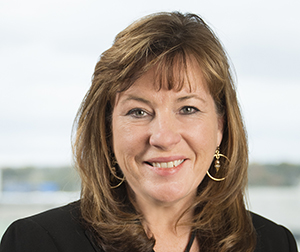
“We’ve advised pharmacy clients through every stage of growth and challenge,” Linda Clark, co-chair of the law firm’s pharmacy team, said in the announcement. “This launch reflects Barclay Damon’s commitment to delivering coordinated, industry-specific counsel that helps our clients stay compliant, protect their businesses, and seize opportunities in a complex regulatory and contractual environment.”
This group of attorneys has experience in key practice areas that include regulatory compliance and PBM enrollment, audits, investigations, and terminations. The practice areas also include government investigations and enforcement defense; licensing and operational strategy; corporate transactions, investments, and rollups; data security, HIPAA compliance, and digital health; intellectual property, trademarks, and tech licensing; employment, workforce strategy, and tax planning; and real estate and pharmacy-site development.
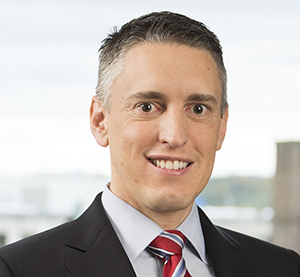
“Our attorneys don’t just know the law, we understand how pharmacy businesses actually operate,” Brad Gallagher, pharmacy team co-chair, said. “Whether we’re advising a startup or defending a multistate provider, our focus is always on delivering clarity, minimizing risk, and driving results.”
The pharmacy attorneys provide legal counsel to individuals and entities across the entire supply chain. That includes retail, specialty, compounding, infusion, long-term care, and 340B pharmacies; pharmacy owners, executives, and licensed pharmacists; and wholesalers, distributors, and pharmaceutical manufacturers.
They also provide legal counsel for private-equity firms and other strategic investors; health-care startups, digital health companies, and technology innovators; and consultants, vendors, and service providers supporting the pharmacy sector, the firm said.
The pharmacy attorneys will deal with representative matters that include recovering reimbursements and reversing PBM (pharmacy benefit manager) terminations and enrollment denials, including through litigation and emergency injunctions.
They’ll also defend clients in complex federal and state audits and investigations, including those led by the U.S. Department of Justice (DOJ); Drug Enforcement Agency (DEA); Office of the Inspector General, and Office of the Medicaid Inspector General.
The attorneys can additionally advise startups and innovators on tech licensing, HIPAA compliance, funding, and go-to-market strategies.
With about 300 attorneys, Barclay Damon describes itself as a regional law firm that operates New York offices in Syracuse (headquarters), Albany, Buffalo. Rochester, and New York City; along with New Haven, Connecticut; Boston, Massachusetts; Washington, D.C.; and Toronto, Ontario.
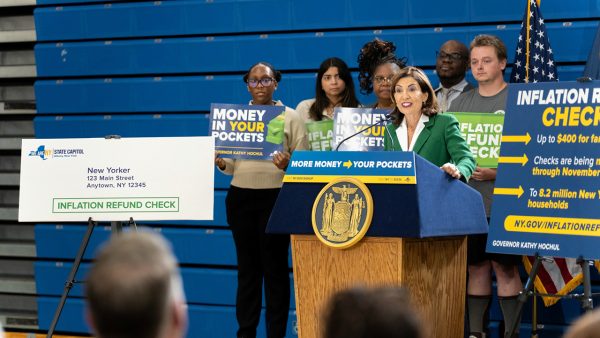
New York’s inflation-refund checks are on the way
State warns of scammers ALBANY — Inflation-refund checks of up to $400 are coming to 8.2 million households across New York. The process started Sept. 26, and the state is mailing checks directly to eligible New Yorkers, with deliveries to continue throughout October and November, Gov. Kathy Hochul announced that day. Residents
Get Instant Access to This Article
Become a Central New York Business Journal subscriber and get immediate access to all of our subscriber-only content and much more.
- Critical Central New York business news and analysis updated daily.
- Immediate access to all subscriber-only content on our website.
- Get a year’s worth of the Print Edition of The Central New York Business Journal.
- Special Feature Publications such as the Book of Lists and Revitalize Greater Binghamton, Mohawk Valley, and Syracuse Magazines
Click here to purchase a paywall bypass link for this article.
State warns of scammers
ALBANY — Inflation-refund checks of up to $400 are coming to 8.2 million households across New York.
The process started Sept. 26, and the state is mailing checks directly to eligible New Yorkers, with deliveries to continue throughout October and November, Gov. Kathy Hochul announced that day.
Residents don’t need to apply, sign up, or do anything to receive a check.
“Starting today, we’re sending inflation refund checks to over 8 million New Yorkers because it’s simple — this is your money and we’re putting it back in your pockets,” Hochul said in the announcement.
On Sept. 28, Hochul’s office also warned New York residents to be aware of scams related to the inflation-refund checks.
The governor warned New Yorkers of scammers who are sending text messages, voice messages, emails, and direct mail to taxpayers in an attempt to spread false information about the checks.
The messages falsely claim that New Yorkers must submit accurate payment information in order to receive an inflation-refund check, supposedly so revenue agencies can deposit money into a taxpayer’s bank account. The New York State Department of Taxation and Finance and the IRS will not call or text New Yorkers with requests for any personal information.
Who’s eligible
You are eligible for an inflation refund check if, for tax year 2023, you filed form IT-201, the New York State resident income tax return; reported income within the qualifying thresholds below; and were not claimed as a dependent on another taxpayer’s return.
Joint tax filers with income up to $150,000 will receive a $400 check, and joint tax filers with income over $150,000 but no greater than $300,000 will receive a $300 check.
Single tax filers with income up to $75,000 will receive a $200 check, and single tax filers with incomes over $75,000 but no greater than $150,000 will receive a $150 check.
The state didn’t place any age restrictions on this process. If you filed a tax return, are below the income thresholds, and no one else claimed you as a dependent, you will receive a check, Hochul’s office said.
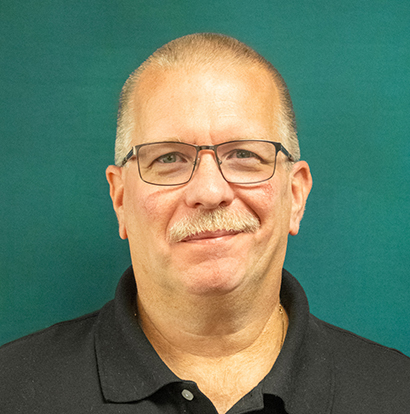
Herkimer College names director of campus safety
HERKIMER, N.Y. — Herkimer County Community College recently announced it has appointed Michael J. Jory, of Herkimer, as its director of campus safety. Jory has served as chief of police at the Herkimer Police Department since January 2017. In this role, he was responsible for overseeing all police operations, personnel, and resources, setting departmental policies,
Get Instant Access to This Article
Become a Central New York Business Journal subscriber and get immediate access to all of our subscriber-only content and much more.
- Critical Central New York business news and analysis updated daily.
- Immediate access to all subscriber-only content on our website.
- Get a year’s worth of the Print Edition of The Central New York Business Journal.
- Special Feature Publications such as the Book of Lists and Revitalize Greater Binghamton, Mohawk Valley, and Syracuse Magazines
Click here to purchase a paywall bypass link for this article.
HERKIMER, N.Y. — Herkimer County Community College recently announced it has appointed Michael J. Jory, of Herkimer, as its director of campus safety.
Jory has served as chief of police at the Herkimer Police Department since January 2017. In this role, he was responsible for overseeing all police operations, personnel, and resources, setting departmental policies, ensuring public safety, managing budgets, ensuring compliance with laws and regulations to maintain effective and ethical policing, and fostering community relationships.
Jory previously served in several roles, including officer, detective, detective sergeant, and captain of detectives for the Gloversville Police Department from 1995 through 2016, per the announcement. He was also a deputy sheriff for Herkimer County from 1989 to 1995.
Jory holds a bachelor’s degree in criminal justice from Buffalo State College. He has received several awards, including the NYS Fire Investigators Arson Investigation of the Year Award in 2010 and the Catholic Charities Window of Hope Award in 2019, the college said.
Located just off New York State Thruway exit 30, Herkimer College is one of 30 community colleges in the SUNY system.
Get our email updates
Stay up-to-date on the companies, people and issues that impact businesses in Syracuse, Central New York and beyond.
